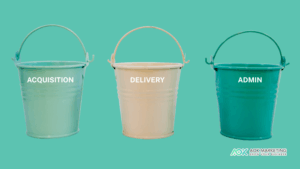Imagine this: You’re running a sponsored ad campaign. Clicks are rolling in. You check the numbers—impressions, CTRs, everything looks great. But your phone? Barely ringing. Or maybe it rings too often, but your team can’t keep up, and leads go cold before anyone can respond.
Now imagine if, instead of losing those leads, you could capture every single one—whether your phone is staffed or not. What if swapping your “click to call” button for a simple lead form could double your conversions and give you more control over your sales pipeline?
That’s exactly what many advertisers are discovering. Here’s how to break down whether click-to-call or a lead form is the better move for your business—and how to optimize lead conversion no matter which path you choose.
What’s the Real Problem With Click-to-Call Ads?
Click-to-call ads seem like a great idea. They shortcut the buyer journey and connect you directly to someone ready to talk. But there’s a catch: you have to be ready to answer—every time.
When you miss a call:
– The lead cools off instantly
– You have no contact info to follow up
– Your cost-per-click goes down the drain
Click-to-call works best when:
– You have a team dedicated to answering immediately
– Your business model benefits from live conversations
– You want fast sales from warm leads
But most small to mid-sized businesses don’t have the bandwidth to handle every call in real time. That’s where lead forms come in.
Forms vs. Calls: Which Converts Better?
Let’s break this down based on three critical factors:
1. What’s Your Business Model?
High-Ticket / Complex Offers
If your offer requires a lot of trust—like legal services, consulting, or custom home remodeling—live conversations matter. Prospects want reassurance. In this case, click-to-call can be powerful if you answer fast.
The risk:
– If you miss that call, you lose the lead
Lower-Ticket / High-Volume Offers
If your product is less complex—think local services, beauty treatments, or simple software trials—speed and scalability are key. A lead form lets you:
– Gather info instantly
– Automate follow-ups via SMS or email
– Sort leads by intent or urgency
Bottom Line:
– Complex sale? You might want calls
– Volume game? Forms usually win
2. What Are Your Campaign Goals?
Immediate Conversions
If your campaign is all about quick wins, and you’ve got a call center (or at least a well-trained front desk), click-to-call can drive results—fast.
But be honest:
– Are all calls answered within seconds?
– Is your team prepared to qualify leads on the spot?
If not, forms may actually convert better, because:
– They work 24/7
– You can follow up when you are ready
– You capture the lead no matter what
Lead Nurturing & Long-Term Value
If you’re building a sales pipeline, or if your offer takes time to close, lead forms shine:
– Collect name, email, and more
– Tag and segment leads
– Run drip campaigns to warm them up
3. What’s Your Operational Bandwidth?
Can You Handle the Volume?
Click-to-call demands instant response. That means:
– Someone is always available
– You’re not missing calls during off-hours or lunch breaks
– You have a CRM or tracking system in place
If not, you’re better off with forms that:
– Capture data regardless of time
– Trigger auto-responders to keep the lead warm
– Let your team respond when they’re ready
Automation with Forms
Modern form tools integrate seamlessly with:
– CRMs like HubSpot or Salesforce
– Email tools like Mailchimp or ActiveCampaign
– Text automation platforms like Twilio or HighLevel
This makes forms a smart, scalable option for businesses without round-the-clock call staff.
Recommendation: Make the Smart Switch (or Combine Both)
Here’s what we recommend based on real campaign data and best practices:
– If you can’t guarantee fast responses to every call, switch to a lead form. You’ll never lose a lead just because your team was busy
– If speed-to-lead is mission-critical and you’re staffed to handle it, stick with click-to-call, but consider a hybrid model. Add a form fallback for missed calls or after-hours
Bonus Tip: Don’t Guess—Test Both
The best strategy is to let the data decide. Set up an A/B test with:
– Version A – Click-to-call only
– Version B – Lead form submission
Track these KPIs:
– Click-through rate (CTR)
– Conversion rate
– Lead quality
– ROI per lead
Many businesses find that form leads convert better in the long run, even if they seem less urgent initially.
Final Thoughts: Don’t Let Leads Slip Through the Cracks
Click-to-call isn’t a bad strategy—but it’s not foolproof. If you can’t staff every second of your ad campaign’s run time, you’re leaving money on the table.
The fix is simple: add a form. Or better yet, test both and let performance guide your next move.
Your ad budget is too valuable to waste on calls no one answers. Give your leads more than one way to say “yes.”
Need help optimizing your ad strategy or implementing lead capture automation?
We help businesses like yours turn ad clicks into actual customers. Contact us to talk about increasing your ROI—without increasing your ad spend.
About The Author
Dave Burnett
I help people make more money online.
Over the years I’ve had lots of fun working with thousands of brands and helping them distribute millions of promotional products and implement multinational rewards and incentive programs.
Now I’m helping great marketers turn their products and services into sustainable online businesses.
How can I help you?




